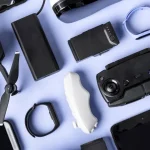In a world obsessed with numbers and benchmarks, shoppers often fixate on processor speed, megapixels, and gigabytes. Those things matter, but they are only half the story. As 2025 makes clear, the real value of a device is shaped by the software it runs and how long that software is supported. A well-supported device stays secure, gains features, and often performs better in real use long after its hardware headline numbers lose their shine.
This article explains why software support should outrank raw specs when you buy tech in 2025, gives real examples from leading brands, and shows how to choose devices that keep delivering value year after year.
Software Dictates Long-Term Value
When you buy a phone or a laptop, you do not just buy a processor and a screen. You buy an ecosystem of updates, patches, and feature improvements that determine how the device performs over time. Frequent security patches close vulnerabilities that would otherwise make a handset unsafe to use. Operating system updates bring performance tuning, battery improvements, and new features that keep older hardware feeling modern.
This is not a theory. Analysts and industry pieces in 2025 repeatedly point to software life cycles as a primary reason devices are replaced. Software demands evolve faster than hardware capabilities in many cases. As apps grow more complex and security threats become more sophisticated, a device without updates becomes a liability and a candidate for retirement.
Big Brands Are Betting on Longer Support, And You Should Notice
A meaningful trend in 2024 and 2025 is that major manufacturers committed to multi-year update plans. Google, Samsung, and Qualcomm all pushed longer support windows, changing buyer expectations.
Google now promises seven years of updates for Pixel 8 and later devices, including operating system upgrades and security patches. That is a significant shift that turns a new Pixel purchase into a longer-term investment. When a manufacturer promises OS and security updates for seven years, the practical outcome is fewer forced upgrades and a longer usable life for the device.
Samsung similarly expanded its software support policy to cover up to seven years of security updates for many Galaxy devices. Samsung’s public support pages and recent models reflect this longer commitment, especially on flagship and higher-tier midrange models. That move makes recent Galaxy phones a much more attractive long-term buy than similar devices sold with only two to three years of guaranteed updates in earlier generations.
Intel and Qualcomm’s ecosystem moves matter too. Qualcomm and Google announced initiatives to encourage longer support on Snapdragon-based devices, effectively enabling more manufacturers to offer extended updates when they choose to implement them. This industry-level shift helps consumers because it reduces the number of phones that are cut off early simply due to chipset limitations.
Small And Purposeful Brands Also Lead By Example
Not every long support story comes from the biggest names. Fairphone, the modular phone maker focused on repairability and longevity, guarantees lengthy update windows for certain models. With Fairphone 5, the company set the bar by committing to long-term support that helps owners keep devices for far longer than the industry average. That strategy ties directly into the company’s sustainability goals and gives buyers a clear reason to choose durability over flash.
Framework, the modular laptop maker, has built its reputation on repairability and software transparency. In 2025, the Framework has made tangible progress in improving BIOS and driver updates and communicating support status. These kinds of companies show that hardware designed with repairability and open support can remain useful much longer than sealed, proprietary systems.
Real-World Costs Of Ignoring Software Support
Buying the fastest phone on sale might feel like a win. But the real cost shows up in year two or three. Devices that stop receiving security updates run a greater risk of malware and exploitation. Lack of OS updates means no new privacy controls or efficiency improvements. Over time, apps may also drop compatibility with older system versions, reducing the device’s capabilities even if the hardware still works.
Practical consequences include: forced early upgrades, reduced resale value, and an increased environmental footprint. A phone that could have lasted three more years with updates ends up being recycled sooner, which increases the cost per year of ownership and contributes to e-waste.
A clear 2025 example is that older midrange models from several brands reached their end of life after about five years, while newer models from the same brands now promise up to seven years. That difference means a rational buyer should choose a model with longer support if they intend to keep a device for the long run.
Features Delivered Over Time: Updates Can Add Value
Software updates are not just security patches. They often deliver functional upgrades that improve the day experience. Examples include camera performance enhancements, battery management improvements, new AI features that run on the device, and interface upgrades that make the device simpler to use.
Apple’s long history of multi-year support for many iPhone models shows how software can keep older phones relevant. Users get years of iOS improvements that enhance performance and occasionally unlock features that were not obvious at purchase. That is why many iPhone owners keep their devices longer than their Android counterparts.
For Android users, Pixel phones have become especially attractive for buyers who value software longevity and direct updates. Google’s Pixel Drops and feature updates often bring new capabilities that make a device feel fresh years later. That is a clear reason to weigh software policy alongside hardware specs when you choose a phone.

How To Prioritize Software Support When Shopping
Here are practical steps to make software support a priority during purchase.
- Check the Official Update Promise: Look for the manufacturer’s stated update window before you buy. Brands now publish updated timetables for OS and security patches. If the company does not publish clear terms, treat that as a warning sign. Google, Samsung, and Fairphone make their update policies easy to find.
- Prefer Models With Explicit Multi-Year Guarantees: Seven years of updates beats five, which beats three. Longer guarantees usually translate into longer usable life and higher resale value.
- Consider the Software Ecosystem: Devices that get regular feature drops from the maker can improve in utility over time. Ask whether the brand updates older models with new functionality or just security fixes.
- Think About Repairability And Driver Support: If you buy a laptop, check whether the maker publishes BIOS and driver updates and whether parts are available. Modular and repairable designs tend to be serviceable for longer. Framework and Fairphone are good examples of repair-friendly design.
- Factor in Chipset Support: Chipset makers like Qualcomm now offer extended support windows that can enable manufacturers to provide longer updates. If the vendor has a modern Snapdragon with extended update support, the phone is more likely to get long-term updates.
Power Your World, Anytime, Anywhere with AllPowers
No more blackouts, no more limits—just pure power from the sun from AllPowers‘s portable solar solutions. Whether it’s for camping trips, emergencies, or everyday use, AllPowers keeps you connected wherever you are. Say goodbye to outages and hello to reliable, eco-friendly energy. Explore iallpowers.com for a smarter solution to power your home today!
When Specs Still Matter
This is not a plea to ignore hardware. Raw performance, durable construction, battery capacity, and camera hardware all matter. The point is to stop treating specs as the only metric. A device with a great processor but a poor update policy will age faster in real life than one with sensible performance and strong software support.
For example, a midrange phone with a long guaranteed update window can outperform a flagship that receives only three years of security patches and no major OS upgrades. The midranger may be slower on benchmarks, but its ongoing software updates keep it secure and feature-rich, making it more valuable across its lifetime.
Brand And Product Recommendations For 2025 Buyers
Below are practical picks and why they make sense for shoppers who value software support.
- Google Pixel 8 and Later: Google’s Pixel 8 and newer devices come with a seven-year update promise, which makes them a strong choice for people who want long-term features and security updates. Pixels also receive Google feature drops that add capabilities over time.
- Samsung Galaxy S25 Series and Newer Flagships: Samsung expanded support to up to seven years for many Galaxy devices. For buyers who want a wide hardware range and extended updates on non-flagship models, Samsung is now more competitive on the software front.
- Apple iPhone (Recent Generations): Apple’s ecosystem historically offers many years of iOS support for qualifying devices. Buyers who prioritize longevity and a steady stream of OS improvements will find iPhones to be a dependable choice.
- Fairphone 5 and Modular Alternatives: For buyers focused on repairability, sustainability, and above-average software updates, Fairphone remains unique with explicit long-term support commitments. These phones are built to be repaired and to last.
- Framework Laptops: If you want a repairable laptop with clear driver and BIOS support, Framework’s open approach and public update tracking make it a strong contender for longevity. Improving update practices in 2025 makes it even more compelling.
How To Extend The Life Of Existing Devices
If you already own a device, you can still make software support decisions work in your favor.
- Keep It Updated: Install security patches promptly. That alone reduces risk considerably.
- Use Lightweight Software When Possible: Choose apps that are resource-efficient. This reduces strain and keeps the device usable longer.
- Consider Custom ROMs and Community Support: For some users, community-maintained ROMs or Linux distributions can extend life after official support ends. This route requires technical comfort and careful security awareness.
- Buy Quality Batteries and Repair Parts: Replacing a failing battery or a worn screen extends usable life far more cheaply than replacing the entire device.
Software Is The New Durability
As 2025 unfolds, the smartest way to buy tech is to look beyond raw specs and ask how long the device will be kept healthy through updates. Software support now determines security, features, resale value, and ultimately how long a device stays useful. Choose brands that publish clear update policies, favor devices with multi-year guarantees, and prioritize repairability where possible. When you make software support central to your buying decisions, you save money in the long run and reduce your environmental footprint. That is a win for both your wallet and the planet.





